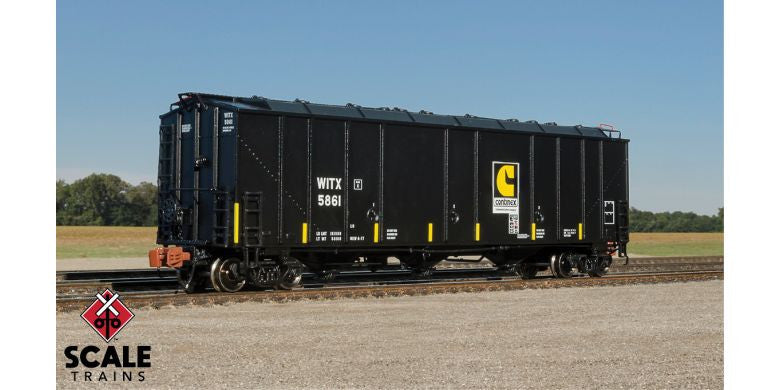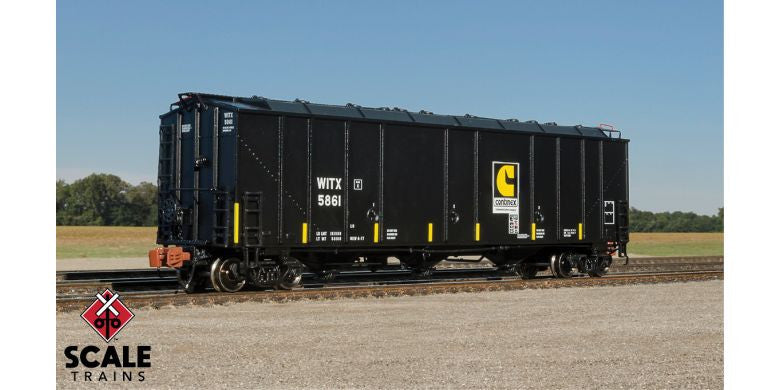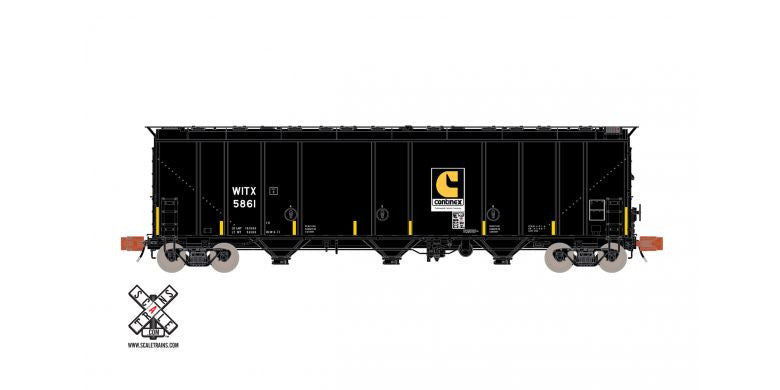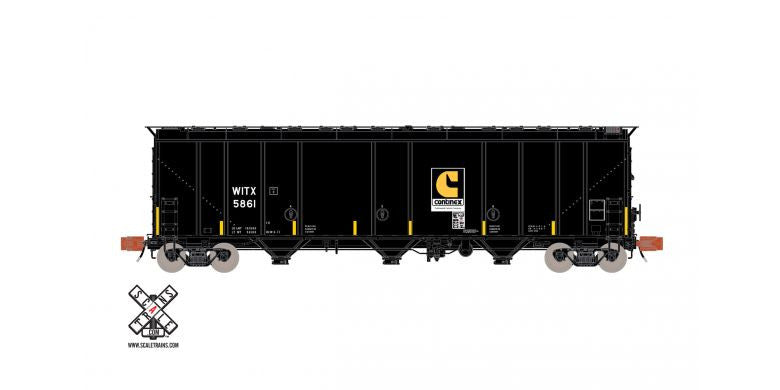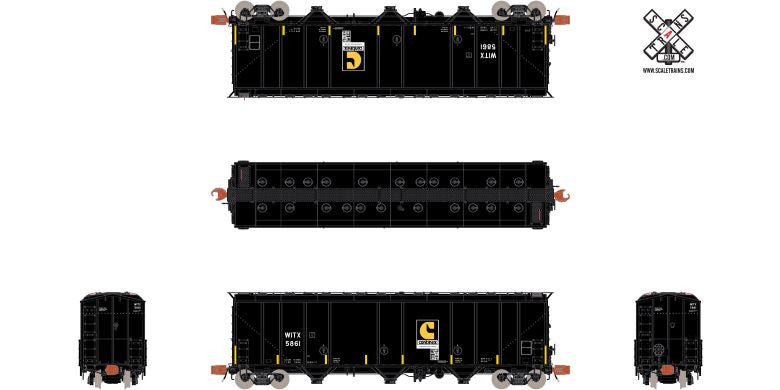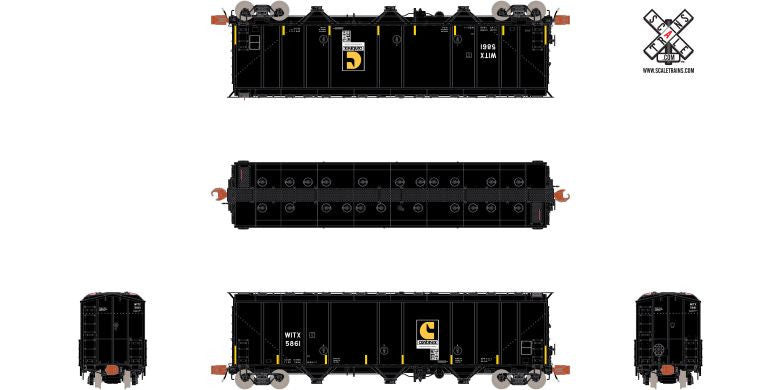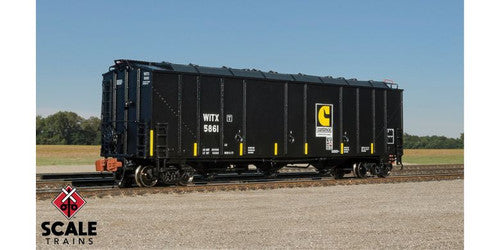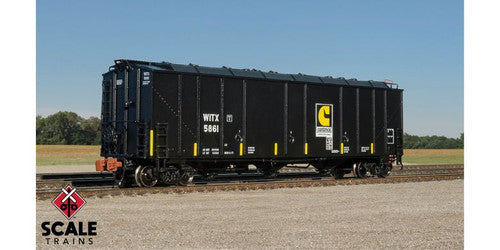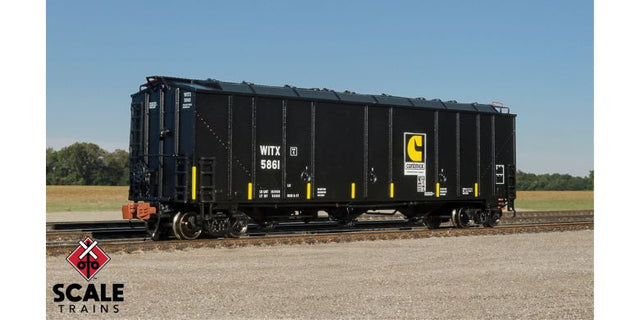Road Number Specific ScaleTrains
- Era: Mid 2000s – present
- Series 5861-5884 built 6/77
- Large Continex logo on car side
- FRA-224 reflective stripes
- 22 round roof loading hatches
- Paint matches Tru-Color Paint color: TCP-171 Weathered Black
- Four (4) different road numbers
- 1970s carbody featuring 10 column-style posts per side and unique “stepped” roofline
- Separate granuflator plumbing
- 22 or 28 roof hatches
- Photo-etched stainless-steel running boards and end platforms
- Separately-applied ladders
- Finely-detailed underbody brake detail
- Body-mounted semi-scale Type E knuckle couplers
- ASF Gould-cast 70-ton Ride Control Trucks with finely rendered raised foundry data
- 33” machined metal wheels
- Minimum radius: 9 ¾”
- Recommended radius: 11”
Rivet Counter N Scale Freight Cars Feature
- Fully assembled
- Multiple road numbers
- Factory-applied metal grab irons, coupler cut levers, and trainline hoses
- Intricate brake plumbing
- Printing and lettering legible even under magnification
- Weighted to Industry standards for reliable operation
- Operates on Code 55 and 70 rail
- Clear jewel box packaging safely stores model
- Color matched to existing Tru-Color Paint colors whenever possible
A byproduct of the petrochemical refining industry, carbon black is a fine, powdery substance with a consistency sometimes described as being akin to soot. Deep black in color, one of its major consumers is the automotive industry, where it’s used as filler in tires, belts, and other rubber products. It also sees usage as a pigment in inks, paints, and plastic products, all of which make it a popular commodity with a variety of industries. Hauling it, however, can be challenging thanks to its physical properties. Covered hoppers are typically used to handle carbon black, with unique designs dating back to the 1920s.
Found throughout North America, these unique freight cars are commonly found in large groups near major carbon black producers or users. They can also be seen singularly or in small blocks of cars in mixed freight trains. Both prototypes were painstakingly researched from field documentation, photographs, reference books, and builder drawings.
In 1992, Thrall introduced the 4727 cubic foot carbon black covered hopper. In contrast with the boxy 5750cf design, this newer design more closely resembles traditional covered hoppers. Similar in appearance to “high-hip” grain hoppers, these cars featured three bays, external posts, and “open” ends with visible slope sheets. Common with their larger 5750cf cousins, these 70-ton cars feature “butterfly” outlets, multiple round loading hatches on the car roof (22 or 28 depending upon customer specifications), and sampling spigots mounted into small indents in the car sides. Many of these cars are still in service today.
Reference: Carbon Black Cars: Freight Cars Journal Monograph #15 by Eric A. Neubauer, ISSN 0884-027X, 2030
